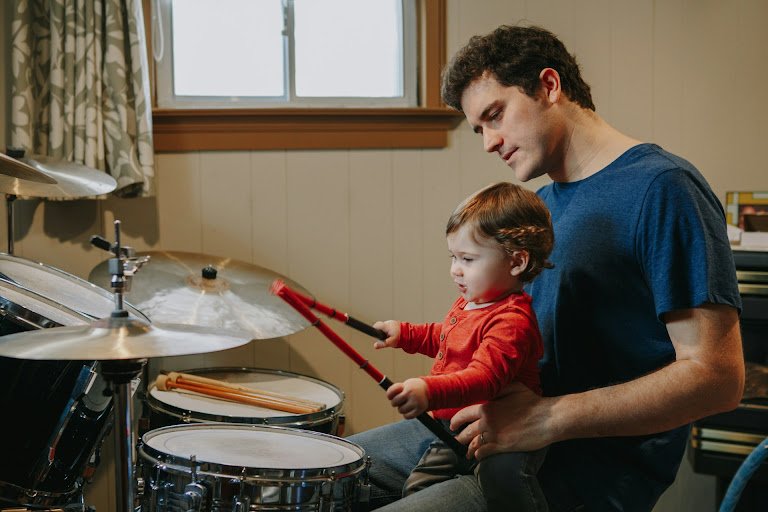Why Drumming is One of the Best Sensory Activities for Autism
As someone who's worked with special needs children for over a decade, I often get asked the same question. "My child covers their ears when the dishwasher runs, but somehow they're fascinated by my neighbor's loud drumming. How does that make sense?"
Obviously, this is confusing. If your child has autism, it can feel surreal that some loud sounds are totally overstimulating, whereas other loud drumming noises you thought would be are instead interesting and even soothing.
Well, drumming specifically stands out among sensory activities for autistic children. Unlike the unpredictable chaos of everyday noise, drumming provides controlled, rhythmic sensory input that can actually calm and regulate your child's nervous system.
And it can be well worth considering as a hobby or pastime.
The science behind why drumming works
Recent research from King's College London has shown that drumming actually creates measurable neurological changes in autistic adolescents' brains.
When children drum at approximately 8 beats per second, it triggers what neuroscientists call "rhythmic entrainment" – essentially syncing the brain's activity to promote calm focus.
In clinical studies, children showed a 40% reduction in anxiety after just 8 weeks of regular drumming sessions. Brain scans revealed improved connectivity between regions responsible for attention, communication, and emotional regulation.
But here's what makes drumming uniquely powerful: it engages multiple sensory systems simultaneously.
Your child receives tactile input through vibrations in their hands and arms, proprioceptive feedback from the physical movements, controlled auditory processing, and visual tracking of their coordinated movements.
It's like a full-body sensory workout wrapped in an activity that feels like play.
How to adapt drumming to different sensory needs
For sensory-seeking children who crave intense input, drumming provides a safe, socially acceptable outlet for their need to create noise and movement. They can start out loud and energetic, gradually learning to modulate their intensity.
For sensory-avoiding children who typically shy away from loud sounds, the key is a gentle introduction. I always start these children with soft mallets on practice pads, sometimes even letting them wear noise-canceling headphones initially.
The difference is predictability.
Your child controls when the sound starts, stops, and how loud it gets. This sense of agency transforms what could be overwhelming noise into therapeutic sensory input.
How to get started: Practical steps for parents
Interested in introducing your child or nurturing an existing interest? Don't worry; you don't need expensive equipment to begin.
Start with what you have: wooden spoons and pots create surprisingly satisfying drum sounds. If you're ready to invest, rhythm sticks ($15) or a small hand drum ($30) work wonderfully.
For families wanting to progress further, a basic electronic drum kit with volume control runs about $200 and grows with your child.
Of course, you can always work with a music tutor (one who specializes in special needs) or a music teacher who can let you try their existing set.
Create a dedicated drumming space away from other distractions.
Begin with 5-minute sessions using visual timers, gradually building to 20 minutes as your child's tolerance increases. Keep backup sensory tools nearby – fidgets, weighted lap pads, or noise-canceling headphones for overstimulation moments.
Watch for positive signs: sustained attention, reduced repetitive behaviors, improved eye contact, or increased vocalizations. If you notice covering ears, increased agitation, or withdrawal, simply reduce the volume or take a break.
Every child's sensory profile is unique, so pay attention.
Ready to try drumming with your child?
Start small with household items this week. Pay attention to their natural rhythm preferences – some children gravitate toward fast, energetic beats while others prefer slow, steady patterns.
Trust your instincts about what feels right for your family, and remember that even five minutes of rhythmic play can make a difference in your child's sensory world.


